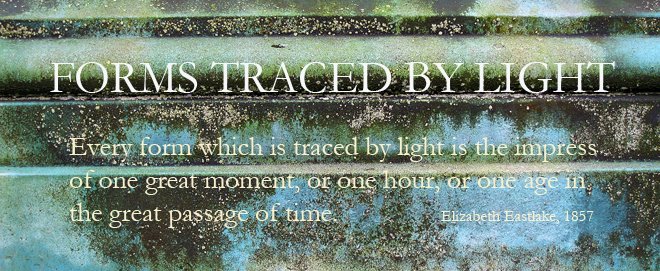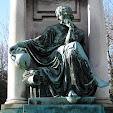
Before one is driven out to Walter De Maria's Lightning Field - 400 stainless steel pointed poles, arranged in a symmetrical grid somewhere north of Quemado on the high plains of Central New Mexico - one is made to sign a form affirming that one realizes that lightning is dangerous; that one might encounter various tricky items of wildlife (I did, indeed, encounter a two foot rattlesnake, going about its slithering business), and that one recognizes that photography is not permitted. It is also surely the case that very few people head off to the Lightning Field without a camera somewhere on their person, even if it's only on their cell phone.
So why this prohibition? As Catherine Lord remarked (and my profound thanks to her for inviting me along to share this experience with her, three UCIrvine MFA students (Nina, Josh, and Dong) - and one Harvard student (Martabel), there is, of course, something of the performative about it - it makes one think about photography, and its adequacy, or otherwise, as a representational means for engaging with this particular art work. It's a prohibition, however, that makes one consider, as well, the control that a sculptor may want to possess over his work. I found myself bridling, initially, at the possessiveness of the prohibition - a restriction of other people's right to take this work as the raw material for their own: a capturing not just of their experience, but an acknowledgement of the beauty of - say - the first morning rays of sunlight hitting the poles, and turning them, and the surrounding grassland, an extraordinary shimmering tangerine gold haze. But then - and here we hit intentionality - how far should an artist be able to determine the conditions under which his or her work is seen? For De Maria's intention is not just to offer up an aesthetic object in its own right, but to demand that we see it - that we live with it, and our responses, and our thoughts, over time. Why else allow only six people at a time to view it; drive us forty five minutes down rough roads, and leave us for twenty hours in a renovated 1918 log cabin, with a casserole of green chile enchiladas, a pot of beans, and each other for company?
I have a huge amount to say about all of this, and not enough energy to do it justice this evening - in part because I got up at dawn to see the sunrise, which was one of the most sublime experiences imaginable. And (having been talking to Nina about the sublime) I mean that in its fullest, most Kantian sense. The longer I spent there (and it was very hard to be picked up at 11.30 this morning, even if we did all go off and eat a lot of pie in Pie Town, made famous, for me, by Russell Lee's FSA color photographs), the less relevant the idea of photographing it seemed to be, and the more important the inner, and the conceptual experience of being in this setting became.
Very unusually for me, I couldn't stop writing. I stayed out on the Field from 5. 10 a.m. till 10.30 - returning only to make some coffee (everyone else was back asleep...) walking, and looking, and thinking, and writing. A very weird annihilation of time took place. I'm normally meticulous about one journal page per day - but I seem to have written half way through next Wednesday, and that's not counting some more notes and a badly inadequate drawing at the back. Photography, for me, as an activity, became relatively irrelevant - though thinking about it did not, and in a feverish, elated, ideas pouring over each other way, I took note after note after note, about what I saw, about - well, yes, about the irrelevancy of the photographic flash by the side of flashes of lightning. Even though we didn't witness any direct storms hit the field (with the irony of which only New Mexico is capable, I arrived back in Eldorado to a magnificent display of lightning and heavy rain), the anticipation of lightning was there all of the time - and that sense of imminence, of about-to-be spectacular, is very inimical to the ideas behind so much photographic theory.
I think that I care enough about the prohibition (and/or De Maria's emphasis on primary experience being something that should be felt) to respect it, when it comes to public reproduction, at least. Another factor that crosses my mind is that the prior circulation of many different reproductions might diminish the effect of this actual experience, preconditioning the eye. But surely writing can do this too - I stopped reading Kenneth Baker's long essays on his several stays at the Lightning Field after half a page, because I didn't want his intellectual, literary, cultural response to influence my own at the time, brilliant though it is in retrospect. Nonetheless, in this picture - which may or may not have been taken on the Lightning Field, but bear in mind that one of the few noises, apart from clear birdsong and the occasional incongruous jet airplane, is wind, wind, wind, and bear in mind, too, the empty striped bee shells that litter the red soil and the chamisa - in this picture, and for once, writing holds prominence.


Brilliant, beautiful post -- and I love that coy "when it comes to public reproduction, at least." Show me! Show me! ;-)
ReplyDeletevery nice, wrestled with the same issues myself!
ReplyDeletei will look for baker's essay now that i have also visited the lightning field. glad to have found this, and hi to catherine!